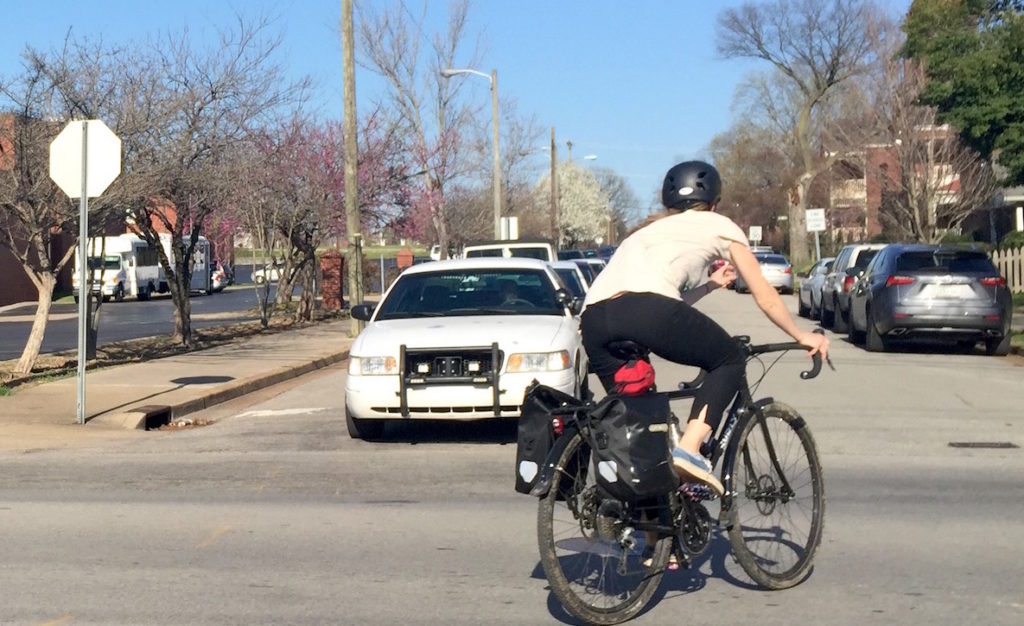
Nashville bicyclists — or those who have at least tried to ride in the city — overwhelmingly say that current bike lanes and traffic patterns leave them feeling unsafe. With that in mind, Metro has debuted a new approach on bike lanes and greenways that will cater to beginners, and strive to create a “low stress” bicycling network.
The new network is meant to appeal to a cyclist like Alan Leiserson, who looked over the strategy at a meeting Tuesday.
“I’ve actually cut back on the amount I ride on city streets because I don’t feel safe doing it,” he said. “I’m inclined to take my bike in my car to Percy Warner or something, rather than bike there.”
He isn’t alone. A Metro survey that informed
the WalknBike plan found 82 percent of local riders aren’t comfortable using a bike lane when it is only a painted stripe on the roadway.
“You’re close to the cars on one side; you’ve got the car door opening hazard on the other side,” Leiserson said.
Urban planner Nathan Oliver, with Hawkins Partners, encouraged Leiserson to
fill out a comment card with his observations, as Metro is still taking feedback this month.
“We want to make sure that what we’ve heard and the kind of the network that we’ve outlined, still fits with the community and the people that use it on a regular basis,” Oliver said.
Of $41 million in proposed bicycle spending, WalknBike calls for a majority of projects to be bikeways that are separated from vehicle traffic — either by curbs, medians, planters or bollards.
Metro Public Works, which oversaw WalknBike, calls this approach a “first” for the city.
The draft plan contains a means of prioritizing a network of low-stress bicycling facilities – meaning, comfortable to ride for people of all ages and skill levels. While there is a need for bikeways throughout Nashville, WalknBike recommendations focus on completing connections for the urban-core, where demand and need for a connected network are the greatest.
Right now, Davidson County has 6 miles of protected lanes. The plan sets a goal of increasing that to 61 miles.
Below: Use the slider to view a before-and-after rendering of how a Nashville street such as 12th Avenue South could be made more bike-friendly.
Altogether, WalknBike outlines a countywide biking network increase from 278 to 421 miles, with most projects focused on the urban core.
Cyclist Matt Glassmeyer, who attended the rollout meeting by riding his bike and a bus, said Nashville doesn’t need to invent new cycling ideas — but rather
take cues from leading cities. And he has seen improvements.
When he first began bike commuting in 2006, Glassmeyer “felt like I was the only person on the road,” he said.
“Today, I passed people bundled up, and it’s exciting to see that,” he said. “And I rode in several bike lanes to get here and home, and did several errands, so we’re making progress.”
Pedestrian Deaths Identified
Separately on Tuesday, a new analysis of pedestrian dangers ranked Nashville the 37
th most dangerous place among 104 large metro areas.
Smart Growth America counted 209 pedestrians struck and killed by cars while walking in Nashville between 2005 and 2014.

Local advocacy group Walk Bike Nashville said that while Nashville’s ranking improved from 2014, the count of fatalities in the decade under study (209 deaths) was similar to the prior 10-year period (210 deaths).
“The number of pedestrian deaths in Nashville is unacceptable,” said Nora Kern, the group’s executive director. “We must change our infrastructure to prioritize the most vulnerable road users — people walking


